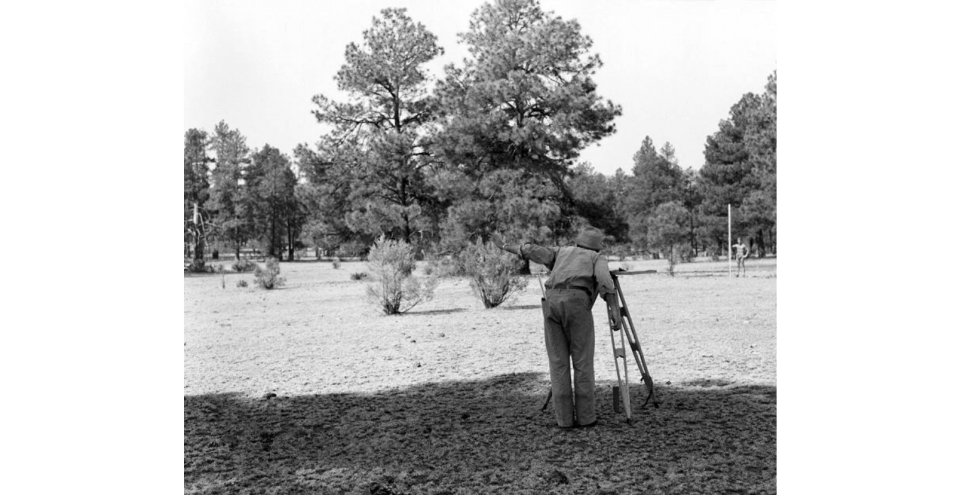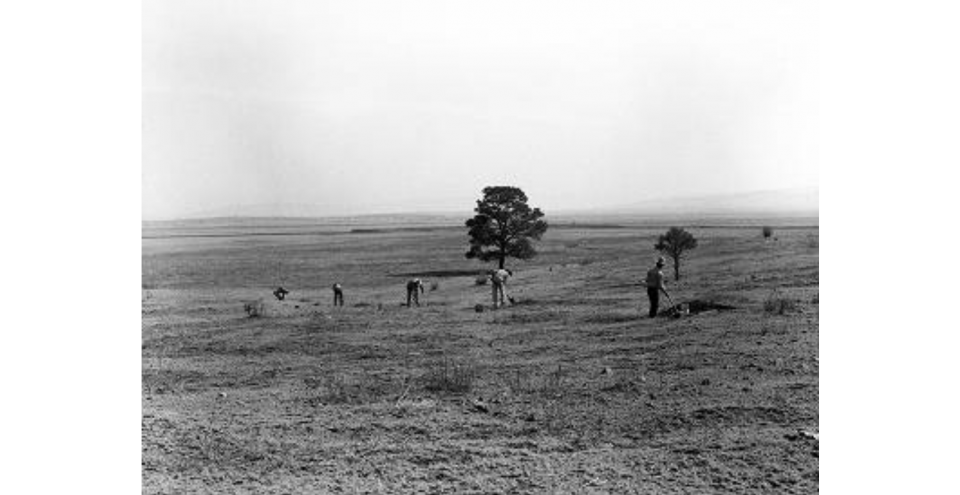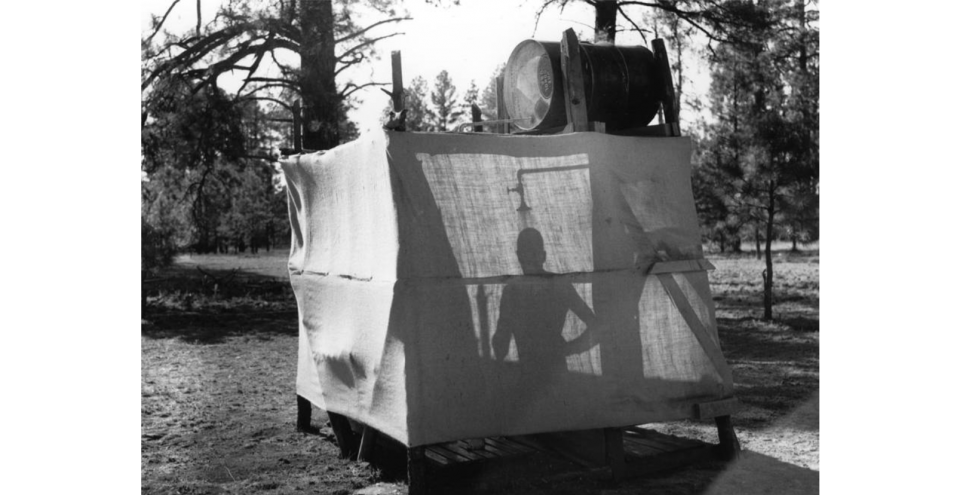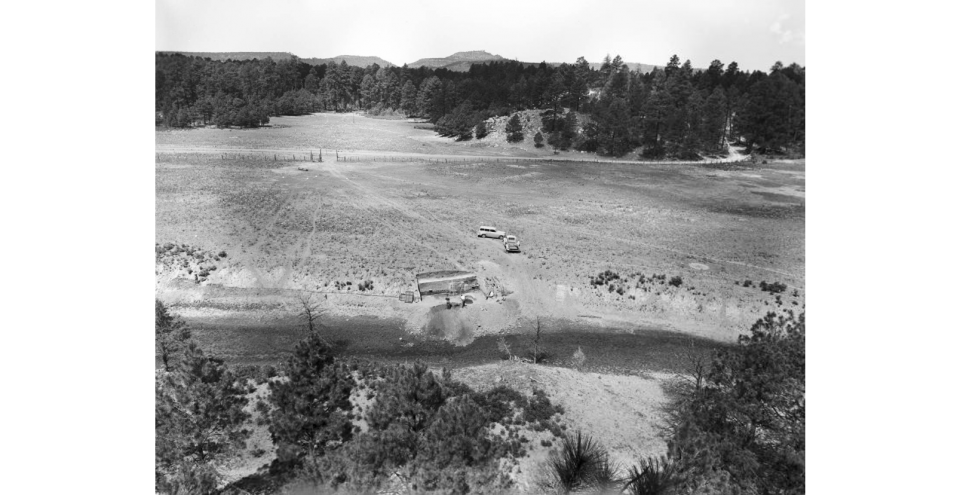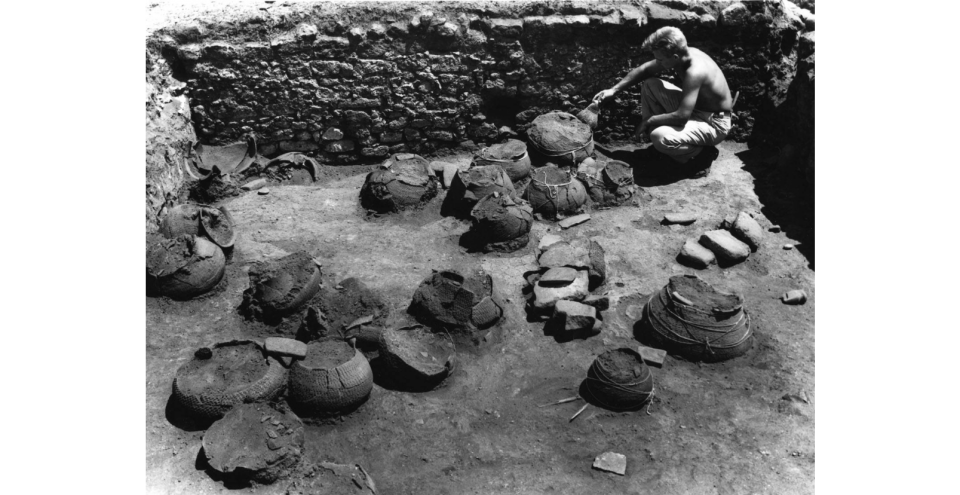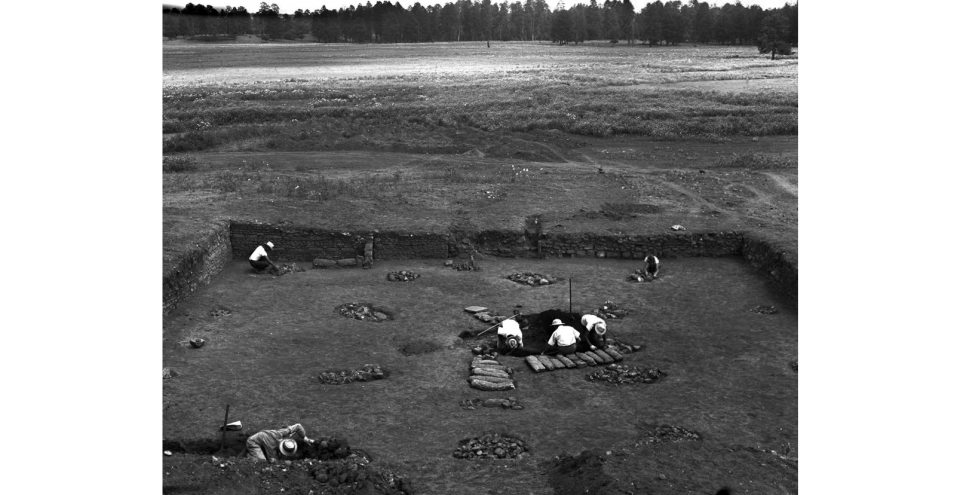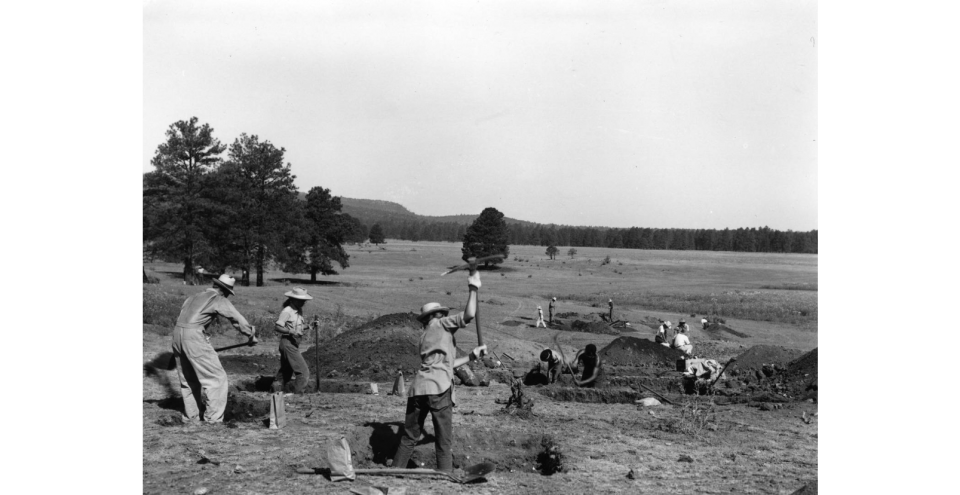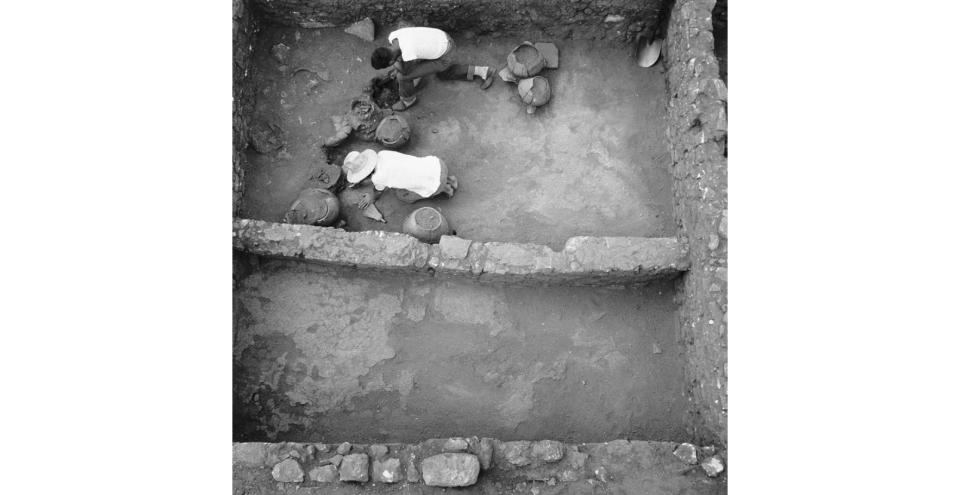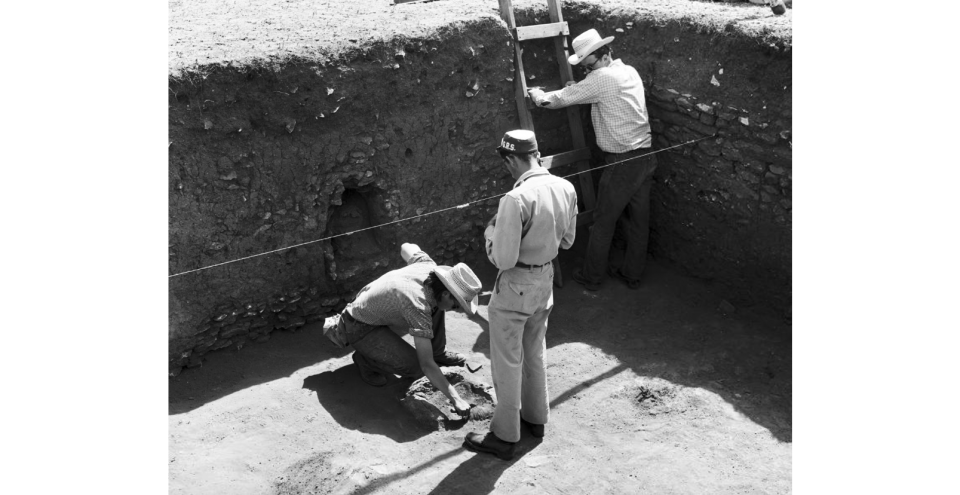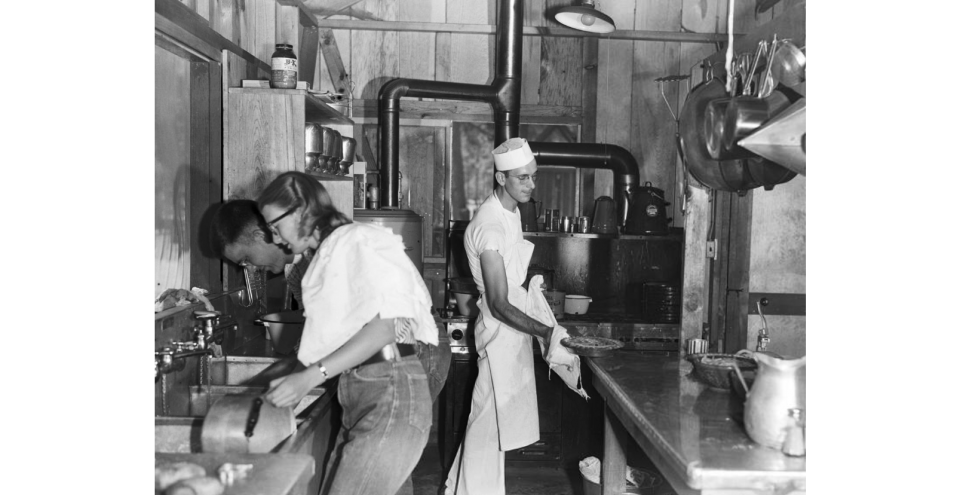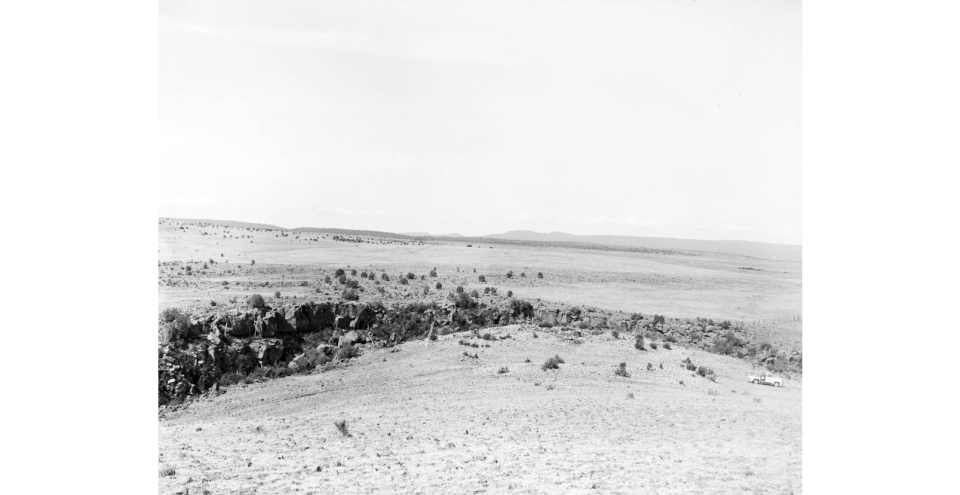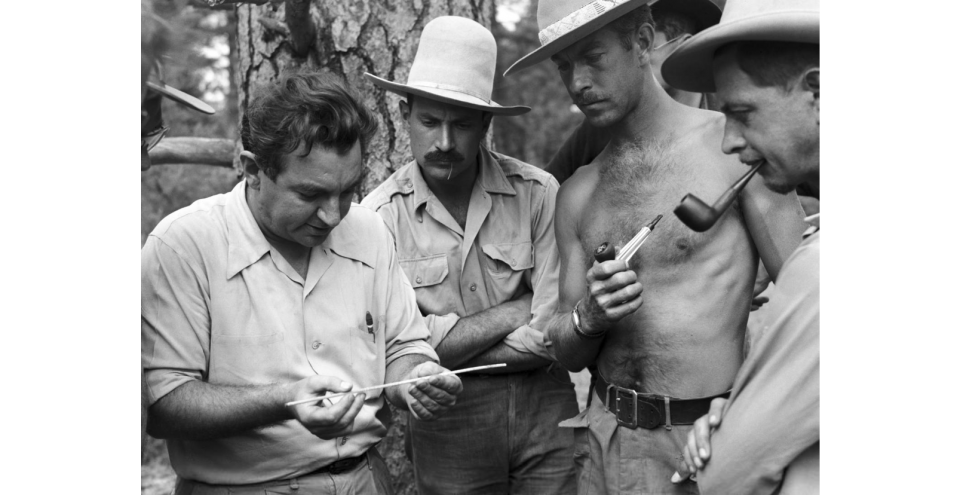Early Southwest Archaeology at Point of Pines
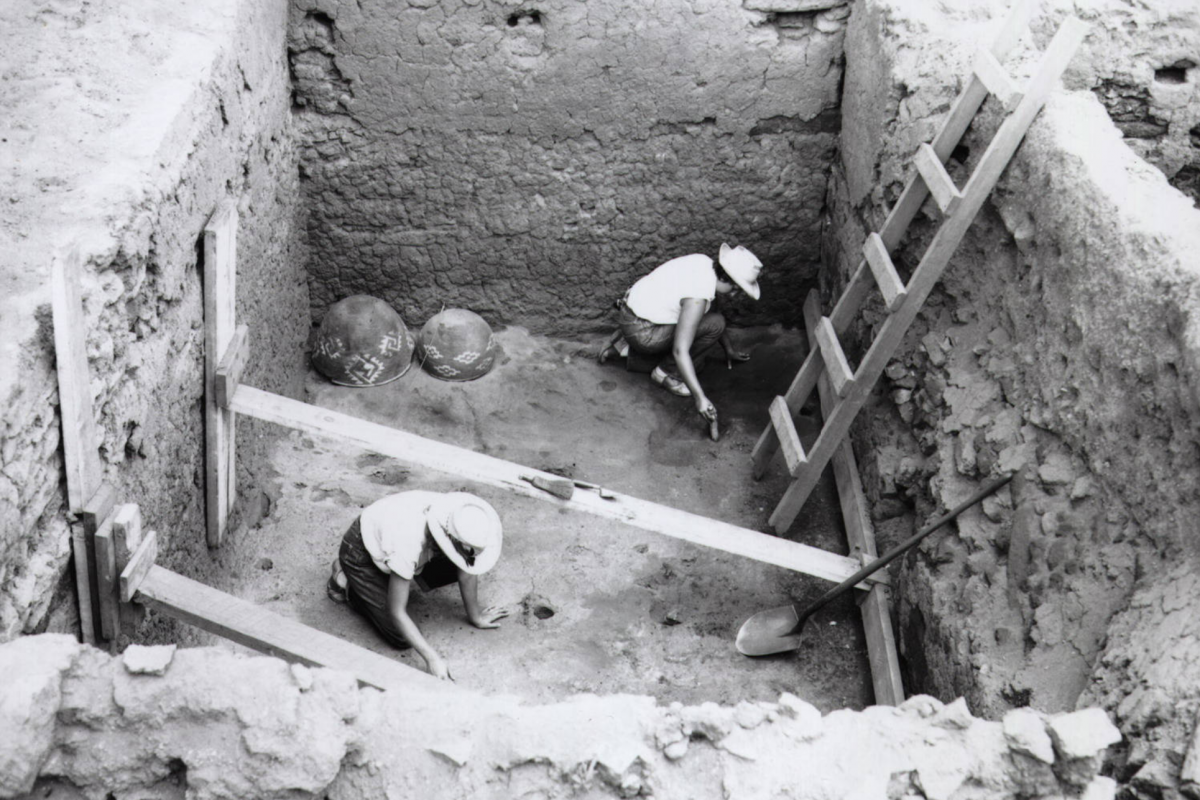
Early Southwest Archaeology at Point of Pines
From 1946 to 1960, in the remote pine country of east-central Arizona, the University of Arizona's Department of Anthropology, under the direction of Dr. Emil W. Haury, operated one of the first archaeological field schools in the nation where hundreds of students were trained in archaeological field work. The school was called the Point of Pines Field School because it was situated and surrounded by significant Mogollon pueblo ruins, the largest being Point of Pines Pueblo. This collection of 39 images from the Arizona State Museum's Photograph Collection documents the daily life of the camp and the early archaeological processes used in their site excavations. Most of the photos presented here were taken during the 1946-1956 period.
During the first season of the camp only ten students were invited to begin the field school. These participants were forewarned that much of the work at first would be to build the camp and not archaeological in nature. Construction began in June 1946.
Subsequent seasons averaged 20 students and offered them hands-on training with plenty of digging, record keeping and studying under the supervision and instruction of archaeologists. In addition to their field work, students also attended evening lectures, went on field trips, and spent time exploring the region. Even in the mid 20th century this region was still remote; the closest hospital was 75 miles away and travel was across dirt roads.
Of the 278 students who participated in the 15 seasons of the field school, 159 were women. Students came from over 60 colleges and universities and 17 students came from foreign countries. Some notable archaeologists trained at the Point of Pines Field School include: Vorsila L. Bohrer, David A. Breternitz, Jeffrey S. Dean, James C. Gifford, Leopold A. Heindl, Elizabeth Ann Morris, William James Robinson, Terah L. Smiley, Raymond H. Thompson, Elisabeth J. Tooker, Fred Wendorf, Joe Ben Wheat and Richard B. Woodbury.
Woodbury describes fieldwork as "The archaeological site is our laboratory, and no situation is ever truly repeated, as every site, every room, every occupation layer, every midden, is different from any other. So the opportunity to dig, with supervision and instruction, destroying as little evidence as possible, and recording as much as possible, is essential to learning to be an archaeologist."
The Point of Pines Field School excavated Point of Pines Pueblo, Nantack Village, Cienega Creek Site, Willow Creek, Crooked Ridge, Stove Canyon and Turkey Creek Pueblo. In addition to bringing a previously unknown region of the Southwest into archaeological focus, the Point of Pines Field School also shaped the field methods and techniques used in archaeological excavations in the US and trained a significant number of archaeologists who taught succeeding generations of field archaeologists.
For an excellent history of the school, read Point of Pines, Arizona: A History of the University of Arizona Archaeology Field School by Emil W. Haury, Tucson: University of Arizona Press, c1989.

